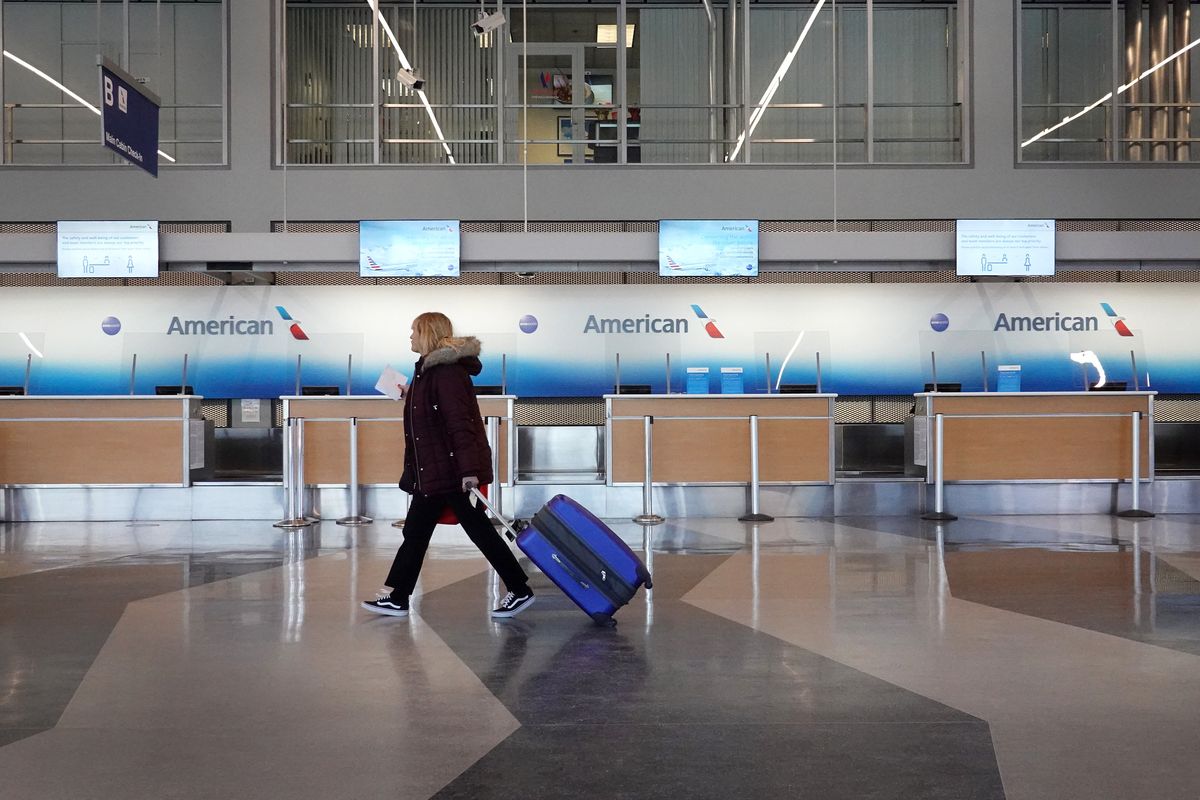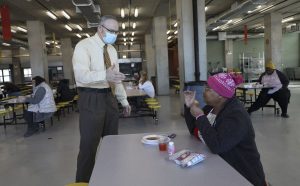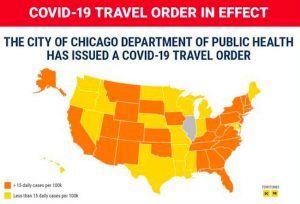Latest
Summer in the city? Chicago eases travel limits as statewide COVID-19 infections, hospitalizations hit July numbers
Public health officials in Chicago have loosened guidelines for travel to and from 18 states as the city’s COVID-19 testing positivity rate sits at its lowest point since the onset of the pandemic.
Those states, which include Wisconsin and Indiana, have also seen coronavirus infections decline, moving them down from the “orange tier” to yellow on the color-coded emergency travel order updated Tuesday by the Chicago Department of Public Health.
The city still wants people traveling from the 31 remaining orange-level hot spot states — including Iowa and Kentucky — to quarantine for 10 days or have proof of a negative COVID-19 test from within three days of arrival to Chicago.
That will no longer apply for people who have been fully vaccinated against the virus. The updated order goes into effect Friday.
Read Mitchell Armentrout’s full story here.
News
1:27 p.m. Chicago Park District to reopen the lakefront, play areas, swimming pools
The Chicago Park District announced plans Tuesday to gradually reopen the city’s lakefront, playgrounds and indoor swimming pools.
The Park District will begin opening public access points to parkland east of Lake Shore Drive as snow removal and clean up from recent storms allow.
The Park District said it is preparing more than 500 outdoor playgrounds and nature play spaces to reopen during the upcoming weeks. Indoor swimming pools will offer limited aquatics programming during its spring season.
“We are thrilled that lakefront, playgrounds and indoor aquatics programs can safely reopen,” Park District Supt. Michael Kelly said in a news release. “The district is busy preparing these facilities to open as soon as possible. Although these restrictions are being lifted, we must continue to be diligent with the safety protocols that have been instrumental in our progress.”
Read the full story from Stefano Esposito here.
12:39 a.m. Not to be sniffed at: Agony of post-COVID-19 loss of smell
NICE, France — The doctor slid a miniature camera into the patient’s right nostril, making her whole nose glow red with its bright miniature light.
“Tickles a bit, eh?” he asked as he rummaged around her nasal passages, the discomfort causing tears to well in her eyes and roll down her cheeks.
The patient, Gabriella Forgione, wasn’t complaining. The 25-year-old pharmacy worker was happy to be prodded and poked at the hospital in Nice, in southern France, to advance her increasingly pressing quest to recover her sense of smell. Along with her sense of taste, it suddenly vanished when she fell ill with COVID-19 in November, and neither has returned.
Being deprived of the pleasures of food and the scents of things that she loves are proving tough on her body and mind. Shorn of odors both good and bad, Forgione is losing weight and self-confidence.
“Sometimes I ask myself, ’Do I stink?’” she confessed. “Normally, I wear perfume and like for things to smell nice. Not being able to smell bothers me greatly.”
A year into the coronavirus pandemic, doctors and researchers are still striving to better understand and treat the accompanying epidemic of COVID-19-related anosmia — loss of smell — draining much of the joy of life from an increasing number of sensorially frustrated longer-term sufferers like Forgione.
10:05 a.m. Before Trump left office, FEMA OK’d exporting millions of N95 masks U.S. workers say they need
In the final moments of Donald Trump’s presidency, amidst a national shortage of N95 masks, the U.S. government granted an exception to its export ban on protective gear, allowing as many as 5 million of the masks a month to be shipped overseas.
The Federal Emergency Management Agency issued the waiver, allowing a Texas company to export its products after it failed to secure U.S. customers, according to the FEMA letter obtained by KHN.
National Nurses United president Zenei Triunfo-Cortez called the export waiver “unconscionable” and said N95 masks remain under lock and key in many hospitals. She said she still has to “beg” for a new one if hers gets soiled during a shift caring for coronavirus patients.
Health care employers “and a federal agency that is supposed to be protecting the people of America are not doing their jobs,” Triunfo-Cortez said. “They have no regard for our safety.”
The disconnect between frontline workers going without better protection and federal officials suddenly exporting masks boils down to one thing, workplace-safety experts say: The government has not pivoted quickly enough to lift supply chain crisis-mode guidelines and force employers to take costly and sometimes cumbersome steps to better protect workers with top-quality gear.
The FEMA letter refers to the challenge that Fort Worth, Texas-based Prestige Ameritech faced in finding customers for its government-approved, high-end respirators: Hospitals did not want to “fit test” employees to its N-95s, a 15-minute-per-employee process to ensure that a new N95 model seals to the face, according to company president Mike Bowen.
New Cases
Analysis & Commentary
10:09 a.m. Behind growing number of coronavirus death are names, and behind each name, a story — and a heartache
On the same day the United States passed the half million mark in COVID-19 deaths, the Cook County Medical Examiner’s office released its weekly list of local victims.
I don’t scour the list looking for stories every week the way I once did.
But if you want to understand the scope of the pandemic’s toll, the list of the dead is a good starting point.
The medical examiner reported there were an additional 107 COVID-related deaths in Cook County last week, the lowest tally since last October.
For today, all I’m going to do is list them. For most of the winter, I wouldn’t have been able to even do that much because there were so many.
If you read through the list, I think you’ll see what I’ve seen: that COVID has reached into every corner of the county and touched every group.



















